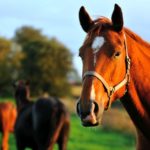Stallions play an integral role in equestrian pursuits as they impact both performance and reproductive success. But stallion welfare is often marginalized due to historical practices, misconceptions or business considerations. Stallions often receive excellent physical care, but their basic psychological needs for social interaction and movement are frequently disregarded in favour of breeding priorities and






